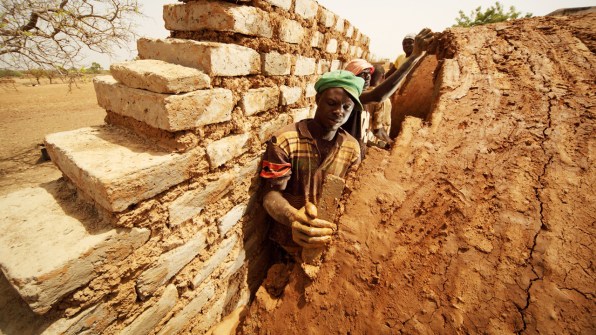
Breaking News
 James O'Keefe: My entire speech at AmericaFest 2025. We're not stopping. Join us to expose..
James O'Keefe: My entire speech at AmericaFest 2025. We're not stopping. Join us to expose..
 U.S. vs. Chinese Military Comparison – Focus on Asia-Taiwan Scenario
U.S. vs. Chinese Military Comparison – Focus on Asia-Taiwan Scenario
 DoJ Sues Four More States for Failing To Produce Voter-roll Data
DoJ Sues Four More States for Failing To Produce Voter-roll Data
 World's Largest Aviation Giant Abandons Google Over Security Concerns
World's Largest Aviation Giant Abandons Google Over Security Concerns
Top Tech News
 Perfect Aircrete, Kitchen Ingredients.
Perfect Aircrete, Kitchen Ingredients.
 Futuristic pixel-raising display lets you feel what's onscreen
Futuristic pixel-raising display lets you feel what's onscreen
 Cutting-Edge Facility Generates Pure Water and Hydrogen Fuel from Seawater for Mere Pennies
Cutting-Edge Facility Generates Pure Water and Hydrogen Fuel from Seawater for Mere Pennies
 This tiny dev board is packed with features for ambitious makers
This tiny dev board is packed with features for ambitious makers
 Scientists Discover Gel to Regrow Tooth Enamel
Scientists Discover Gel to Regrow Tooth Enamel
 Vitamin C and Dandelion Root Killing Cancer Cells -- as Former CDC Director Calls for COVID-19...
Vitamin C and Dandelion Root Killing Cancer Cells -- as Former CDC Director Calls for COVID-19...
 Galactic Brain: US firm plans space-based data centers, power grid to challenge China
Galactic Brain: US firm plans space-based data centers, power grid to challenge China
 A microbial cleanup for glyphosate just earned a patent. Here's why that matters
A microbial cleanup for glyphosate just earned a patent. Here's why that matters
 Japan Breaks Internet Speed Record with 5 Million Times Faster Data Transfer
Japan Breaks Internet Speed Record with 5 Million Times Faster Data Transfer
This Ancient Building Technique Could House Millions Of People In Africa

In Sahelian Africa, a region that spans the continent and is bordered by the Sahara to the north and the Sudanian Savanna to the south, the roofs of many houses are built with bush timber and straw. But amid population growth and rapid deforestation in the region, people have begun to seek out an alternative: corrugated iron sheets, imported from Europe, that are expensive and have to be replaced every five to seven years.
Though they're more "modern," these roofs have failed to deliver sustainable housing to the majority of people in the region. "To build their houses, they have to dip into their meager food, health, and education budgets to buy these imported and expensive materials, which plunges them into a vicious circle of poverty," Cécilia Rinaudo, deputy director of the Nubian Vault Association (AVN) tells Fast Company.
Since 2000, AVN has been working to implement a solution to the region's housing crisis that looks not to modern techniques, but far into the past. The Nubian vault technique was used to build houses in ancient Egypt; instead of relying on a timber frame to support the structures, sun-dried mud blocks are stacked on a foundation of rocks to create a vaulted roof that supports itself. The construction method had been long forgotten, but was rediscovered in the 1940s by the Egyptian architect Hassan Fathy, who advocated for the technique as a viable housing option for the poor.

 Advanced Propulsion Resources Part 1 of 2
Advanced Propulsion Resources Part 1 of 2

